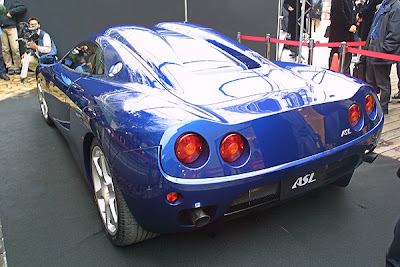| Picture taken from Autoblog |
Clearly this wasn't the plan, as he was determined to get passed the slower Ferrari... so determined that he got alongside Massa at turns 11 and 12 (a 5th-gear left-right), who ran him wide and caused him to use the escape road that cuts the second of the two corners. Doing this gave him the place, which is against the rules. When this happens, trouble can be avoided by letting the driver through within the next two corners. Alas, Button was adamant that his front wheels were ahead of Massa's before he cut the corner, which theoretically would make his move OK, seeing as he had track position. The FIA stewards disagreed, however, and because Ferrari had swapped the two drivers and then pitted Massa, Button couldn't let him through and was thus given a Drive Through Penalty, costing him around 23 seconds. 23 seconds is like a week in Formula 1. Throughout the rest of the race, he fought his way back up, eventually overtaking Massa using the new movable rear wing, or "Drag Reduction System" (DRS) on the pit straight.
The rest of the race was basically par for the course, although veteran Rubens Barrichello - the most experienced man in Formula 1, with 304 race starts under his belt out of 840 Grands Prix - wasn't showing his experience this weekend, with a spin during Qualifying caused by braking into turn 3 with two wheels just onto the grass (considered a schoolboy error) that put him 17th on the grid, followed by a trip across the gravel at the same corner on lap 1 and later putting a move on Nico Rosberg in the middle of the race that was never going to work, causing him to crash into the Mercedes GP driver's right-hand side pod and spin round. This mistake was again made on turn 3. It seems to be an unlucky corner for him. The resulting damage put Rosberg out of the race and Barrichello in the pits twice, firstly for a new nosecone and secondly for a Drive-Through Penalty as punishment for the avoidable incident. Also having a less-than-perfect weekend was Australian Mark Webber. He qualified in 3rd, but he was 8 tenths of a second off his team mate, a gap which shouldn't really be that big. He didn't recover his lost places after lap 1 and came 5th, equalling his best ever finish at his home race.
Lewis Hamilton finished in the same position he started in, despite the front of his McLaren's floor (see A in the left image) hanging off the bottom due to damage and making a lot of sparks, meaning that the plank of wood which all F1 cars must have on the bottom to prevent an excessively low ride height was in danger of wearing out too much and getting the Briton disqualified. As this element also guides the air under the car, its downforce was notably compromised. Thankfully he wasn't punished. Unfortunately, the two Sauber drivers were punished post-race, due to their rear wings being illegal. From what I can work out reading the Official Website, the top surface of the wing is too long/far away. The Sauber team will appeal their disqualification, which denies them not only a well-earned 7th and 8th place, but 10 constructors points as a result. This unfairly subtracts from a great drive from the pair of them, most notably Sergio Perez, who did a huge 35 laps out of 58 on a single set of meant-to-be-short-lasting soft compound tyres (denoted this year by yellow Pirelli logos).
The award for Worst Race Weekend, however, undeniably goes to Hispania Racing Team, but why? Did their cars hit each other? Set fire? Bring out the Safety Car? Well they never had the chance, because their qualification times were more than 107% of the pole sitter's time, which meant they weren't even allowed to start the race!
Overall it wasn't an out-and-out thriller, but it wasn't a Bahrain-style procession either. A decent opening round to what could be a very interesting season. Let's hope for the sake of us viewers that Red Bull can be toppled this year. Considering they dominated this weekend without even using KERS, that could prove difficult in the next few weeks...
The next race is at the Sepang Circuit in Malaysia in two weeks' time. Let's see if HRT can actually start that race...
















_Trial+Mt.jpg)


